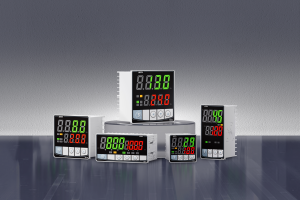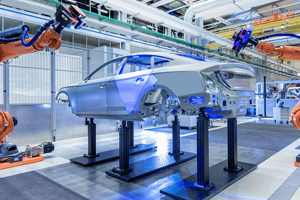How PID Temperature Controllers Work: Components, Applications, and Benefits
Learn how PID temperature controllers work, their components, and applications in various industries. Discover the benefits of using PID controllers for precise and efficient temperature control
1. PID Controllers
A Proportional-Integral-Derivative (PID) controller is an industrial control loop feedback mechanism commonly found within industrial control systems that is essential to maintaining desired system output by minimizing error between setpoint and process variable values. PID controllers play an essential role when precise control over temperature, pressure and flow is necessary.
2. Components of a PID Controller
A PID controller consists of three main parts. These components include the:
1. darui Proportional Component: This component generates output proportional to the current error value and serves to decrease overall errors while not fully eliminating them.
2. Integral Component: This component accumulates past errors and integrates them over time in order to eliminate the residual steady-state error that the proportional component cannot address.
3. Derivative Component: This component predicts future errors based on their rate of change, helping smooth control output while increasing system stability.
Working Principle A PID controller uses a feedback loop mechanism. Sensors continuously measure actual temperature against its setpoint temperature; any deviation between actual temperature and desired setpoint represents error which must then be adjusted by three components to bring process variables closer towards desired setpoint values.
3.Proportional Control
Proportional control adapts output based on current errors; its proportional gain (Kp) determines its magnitude of adjustment; higher Kp values provide larger correction for specific errors, though proportional control alone cannot eliminate steady-state error as it only reacts to immediate problems.
Integral Control
Integral control addresses one of the limits of proportional control by taking account of past errors that accumulate over time, with Ki as its index that determines its contribution and through integration eliminating steady state error; ultimately bringing process variable back within its setpoint range.
Derivative Control
Derivative control predicts future errors by considering their rate of change. Kd identifies how much derivative contribution there should be and, by anticipating potential errors, derivative control helps smooth output while decreasing overshoot and oscillations.
4. Tuning a PID Controller
Tuning a PID controller involves adjusting its proportional, integral, and derivative gains until optimal performance has been reached. A variety of tuning techniques exist - the Ziegler-Nichols method includes setting gains based on how your system responds to step input signals - however proper tuning remains key for system stability and performance.
5. Applications of PID Temperature Controllers
PID temperature controllers have wide-ranging uses across several industries, such as manufacturing, food processing and HVAC (heating, ventilation and air conditioning). PID controllers help manufacturers achieve accurate temperature regulation during processes like plastic molding or metal treatment while food processors use them to achieve ideal cooking temperatures, pasteurization processes or maintain desired comfort settings in HVAC systems - to provide comfort while optimizing energy savings.
Benefits of PID Controllers There are multiple advantages associated with using PID controllers, including: * Precision: They allow for accurate control over process variables to ensure they remain at their setpoint value.
* Efficiency: PID controllers enhance system efficiency by minimizing errors and limiting overshoot, ultimately improving efficiency of operation.
* Stability: Properly tuned PID controllers improve system stability by eliminating oscillations and providing smooth operations.
6. Conclusion
PID temperature controllers are essential components in industrial control systems. By combining proportional, integral, and derivative control into one tool they allow users to reduce errors while keeping desired setpoints steady. Used across industries in today's modern control environments they offer precision, efficiency, stability as well as futureproof tuning methods and integration of advanced control algorithms - essential features in any modern control environment.























